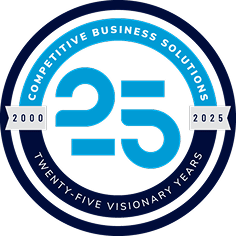
Engaging Employees to Drive Transformation
No matter the size of your business, employee turnover is a significant problem. It is a costly process that affects not only the positions in question but also the entire organization. When employees walk out the door, they take with them the knowledge and proficiencies they’ve spent a lot of time and effort to acquire. And even with well-documented processes in place, it still takes time for new hires to learn the ropes.
That’s why reducing turnover and retaining valuable employees needs to be a top priority for your business. Given the current business landscape, that’s not an easy task. But here are some tried and true strategies to engage employees and drive transformation within your organization.
Understanding Why Employees Leave
Since the dawn of time, money has been a driving force for employees at all levels of the business. But while financial incentives often play a role in an employee’s decision to leave, it’s important to recognize that dissatisfaction with their job or work environment is often the root cause. In fact, we’ve found that unless your wage scales are far below the industry average, money probably isn’t a main driver. Even if an employee claims that money is the primary factor, it’s worth the time and energy to dig a little deeper for other reasons that might contribute to their dissatisfaction. We often find that factors such as ineffective leadership, lack of recognition, poor communication, and limited opportunities for growth can all contribute to employees heading for newer, if not necessarily greener, pastures.
Unlocking the Power of Employee Talent
To drive transformation and engage employees effectively, it is essential to recognize and utilize the knowledge and experience they bring to the table. Organizations should involve employees in the process of redesigning and streamlining workflows. By seeking their feedback and understanding the challenges they face, businesses can develop more efficient processes while making employees feel heard and valued. Respecting their expertise and treating them as valuable contributors can go a long way in fostering engagement and reducing turnover.
The Power of Continuous Improvement
Involving employees in continuous improvement initiatives, such as kaizen activities, can significantly boost their job satisfaction and perception of the company. By actively seeking their opinions and ideas, your business not only benefits from fresh perspectives but also shows your employees that you value their input. This approach fosters a culture of continuous improvement, where employees feel empowered to contribute, and their efforts are recognized and rewarded. Engaging employees in problem-solving and decision-making creates a sense of ownership and drives satisfaction and loyalty.
Moving Away from a Command-and-Control Culture
Many organizations claim that employees are their most valuable asset, but they often fail to back up the sentiment with any real action. To improve operational efficiency, however, it’s crucial to move away from a command-and-control culture and embrace the idea that employees should be encouraged to think critically and take ownership of their work. Many organizations tend to ask their employees to check their brains at the door. But there is real power in treating employees as thinking individuals, capable of contributing beyond their designated roles. If an associate running a machine goes home one night to find his refrigerator is on the fritz, he’s not going to just stand idly by while his food spoils. No, he’s going to take action and fix the problem, one way or another. In the same way, they should be given the freedom and responsibility to help solve issues in the workplace.
Recognizing and Rewarding Employee Contributions
When it comes to fostering employee engagement and driving transformation, recognition goes a long way. When employees take the initiative to fix a problem or improve a process, their efforts should be acknowledged. Recognizing their achievements, even through a quick stand-up meeting or a simple appreciation gesture, can have a profound impact on employee morale and motivation. By recognizing and rewarding their contributions, organizations create a culture that values and encourages innovation. And doing so is a core part of how you drive transformation from within.
Building a Culture of Engagement
Transformation within your business doesn’t happen overnight. In fact, it only happens when the culture itself changes. Creating a culture of engagement requires a deliberate and strategic approach. It involves aligning leadership, providing resources for benchmarking, and fostering open communication channels. Leaders must demonstrate a genuine interest in listening to and valuing employees’ ideas. Additionally, implementing visual management control systems can help capture and record employee suggestions for future consideration. Regular feedback loops are essential for ensuring that employees feel heard and supported, enabling them to bring their full potential to work
Engaging employees to drive transformation is a critical aspect of building a thriving, efficient, and sustainable organization. By recognizing the value of employee expertise, involving them in decision-making processes, and fostering a culture of continuous improvement, your business can reduce turnover, enhance employee satisfaction, and create efficiencies throughout the organization. When you shift away from a command-and-control approach and instead empower your employees, your business can harness its full potential, ultimately unlocking the power your employees already possess to drive meaningful transformation.
Latest Insights
Sign up to receive our latest insights!
"*" indicates required fields




